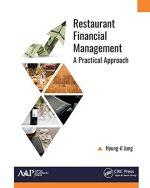
Question 4 Bond A is a 7% annual coupon bond maturing in 4 years from now with a par value of $1,000. Bond B is an 8-year zero-coupon bond with a par value of $1,000. Assume the pure expectation theory of term structure holds. You also observe the following information for treasury bonds from the market: The yield to maturity (YTM) of the one-year zero coupon treasury bond is 4%. The forward rates for future investments are given in the table below: Forward rate from Year 1 to 2 5% Forward rate from Year 2 to 3 6% Forward rate from Year 3 to N (with N 47% Note the last row in the above table means that the forward rate from Year 3 to N is 7% p.a. for N greater than or equal to 4". For example, the forward rate from Year 3 to 5 is 7% p.a. a. Suppose you purchase Bond A today, and re-sell it at the end of Year 3 right after the third annual coupon payment. All coupons are reinvested at the prevailing market interest rates. Determine the expected realized compound yield (RCY) over the three-year investment horizon. (5 marks) b. Suppose you are in debt for a personal loan, and are obliged to make a repayment of $100,000 to a local bank in 6 years. To satisfy the liability, you decide to form a passively managed bond portfolio today by holding bonds A and B. No other securities are allowed in this portfolio. Explain how much money you should invest in Bond A and Bond B respectively, so that you can satisfy the liability in 6 years? Assume you can buy any fraction of a bond, and Bond A has a maturity of 3.5 years. (4 marks) C. (not related to parts a and b). Suppose a listed firm is considering the timing of a new issue of corporate bonds. The CEO of the firm consults an external investment analyst. The analyst suggests that "Given the current borrowing costs in the market, if your firm intends to raise funds via the bond market, you had better wait a year or two rather than do it now." Evaluate whether the suggestion of the investment analyst makes a sense or not? Explain in words without calculation. Question 4 Bond A is a 7% annual coupon bond maturing in 4 years from now with a par value of $1,000. Bond B is an 8-year zero-coupon bond with a par value of $1,000. Assume the pure expectation theory of term structure holds. You also observe the following information for treasury bonds from the market: The yield to maturity (YTM) of the one-year zero coupon treasury bond is 4%. The forward rates for future investments are given in the table below: Forward rate from Year 1 to 2 5% Forward rate from Year 2 to 3 6% Forward rate from Year 3 to N (with N 47% Note the last row in the above table means that the forward rate from Year 3 to N is 7% p.a. for N greater than or equal to 4". For example, the forward rate from Year 3 to 5 is 7% p.a. a. Suppose you purchase Bond A today, and re-sell it at the end of Year 3 right after the third annual coupon payment. All coupons are reinvested at the prevailing market interest rates. Determine the expected realized compound yield (RCY) over the three-year investment horizon. (5 marks) b. Suppose you are in debt for a personal loan, and are obliged to make a repayment of $100,000 to a local bank in 6 years. To satisfy the liability, you decide to form a passively managed bond portfolio today by holding bonds A and B. No other securities are allowed in this portfolio. Explain how much money you should invest in Bond A and Bond B respectively, so that you can satisfy the liability in 6 years? Assume you can buy any fraction of a bond, and Bond A has a maturity of 3.5 years. (4 marks) C. (not related to parts a and b). Suppose a listed firm is considering the timing of a new issue of corporate bonds. The CEO of the firm consults an external investment analyst. The analyst suggests that "Given the current borrowing costs in the market, if your firm intends to raise funds via the bond market, you had better wait a year or two rather than do it now." Evaluate whether the suggestion of the investment analyst makes a sense or not? Explain in words without calculation







